Nuclear submarines in battle
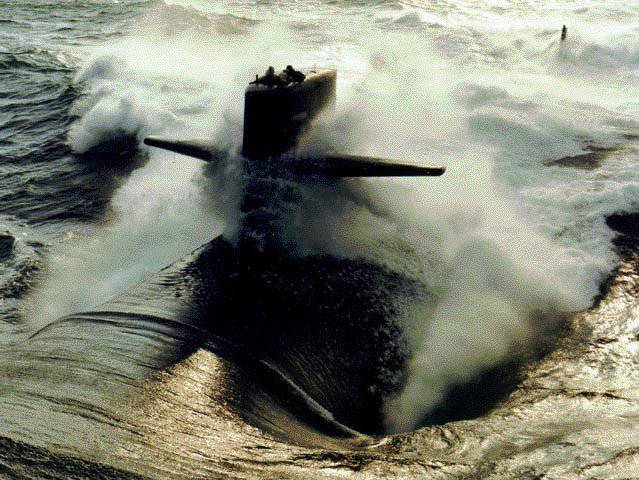
Early morning of a bad day, Her Majesty's Conkeror ship moves in the thickness of the cold waters of the South Atlantic. For 30 hours, the British submarine has been continuously monitoring the Argentine formation led by the cruiser General Belgrano. Here he is - 7 miles straight ahead, swaying in the foam on the ocean wave, confident in his invulnerability. Two destroyers cover the cruiser - the Argentine squadron is a mortal danger for British surface ships. 15 six-inch cannons of the old Belgrano can tear to pieces fragile frigates and landing ships fleet Her Majesty. Argentinean destroyers armed with Exoset missiles pose a considerable threat.
In the twilight of the central post submarine "Conqueror" reigns intense silence, the officers are waiting for an order from the headquarters of the squadron ...
At the same time, a conversation similar to the following takes place in a London mansion on Downing Street 10:
- Admiral Woodward is crazy. He wants to sink the Argentine cruiser.
- This is the right decision.
- We have no right to attack. Argentine ships are still outside the declared 200-mile military zone.
“Sir, the“ 200-mile zone of military action ”itself, which we declared unilaterally, is a violation of all international rules. Heat General Belgrano if necessary.
“Miss Thatcher, are you sure?”
- Destroy the cruiser and no longer ask stupid questions.
A month ago, no Admiral of the Royal Navy dared to lead a risky campaign to the Falklands. Margaret Thatcher had to personally appoint the commander of Rear Admiral Woodward - not the most experienced, but extremely "crazy" naval officer. In order to successfully complete the task, without any hesitation, he demanded that an underwater strategic bomber "Resolution" be included in the squadron - if all British ships were destroyed, a nuclear fire would come down from Argentine military bases from the skies. It is difficult to say whether it was a cruel joke or a real threat, but the determination of Woodward was well known in admiral's circles. "Iron Lady" Margaret knew who should be trusted to "hopeless" expedition.
And now, being on the Hermes aircraft carrier, Admiral Woodward wondered why the submariners did not receive his order to destroy the Argentine cruiser. For some reason, the Satellite Communications Center in Cheltem is blocking transmission. However, the reason is obvious - cowards from the naval headquarters are afraid to take a responsible decision. Damn them! The Argentine fleet takes the British squadron into ticks - it is necessary, before it is too late, to break at least one of the enemy claws. Staff rats! Anchor you in the throat! Octopus without fuel oil nadraenny klyuz!
Only at noon, with a delay of many hours, did a radiogram from London arrive at the Conkeror nuclear submarine: “Urgently. Attack the Belgrano group.
The cruiser went 36 miles from the border of the declared “war zone” and, obviously, felt absolutely safe. The brave Muchachos did not try to hide in shallow water, the Argentine destroyers stupidly scoured on the right beam of the “General Belgrano”, covering the cruiser from the side of the Bredwood bank, where, of course, there could not be any submarines. They didn't even care to turn on the sonars!
Looking at the periscope at all this strange company, commander Reford-Brown shrugged in surprise and ordered to give full speed. A huge steel "pike" rushed through the water column to its goal. Having completed the circulation to the right, the boat reached the point of attack in 1000 meters along the left side of the Belgrano without any obstacles. The victory was already in the hands of British sailors, it remains only to choose the right weapon. Actually, the dilemma was in two types of torpedoes: the newest homing Mk.24 "Tigerfish" or the good old Mk VIII of the Second World War. Taking into account all the circumstances, and rightly believing that the Tigerfish is still not reliable enough, the commander Reford-Brown preferred the straight type torpedo of the old type. At this time, “General Belgrano” swayed peacefully on the waves, moving the 13 with a nodal stroke towards its death. The commander of the Argentine cruiser kaprang Hector Bonzo did his best to destroy his ship.
In 15: 57, the nuclear submarine "Conqueror", being practically in range conditions, produced a three-shot salvo at the Belgrano connection. After 55 seconds, two Mk VIII torpedoes sank into the port side of the Argentine cruiser. The explosions of 363-kilogram combat units were echoing in the submarine compartments, the battle posts were announced with joyful shouts.
Commander Redford-Brown enthusiastically watched the attack in the periscope: he saw the first explosion tore off the entire nose of the cruiser. After a few seconds, a new flash flashed and a huge column of water shot up in the area of the feed superstructure General Belgrano. Everything that was happening at that moment on the surface was like a dream. Radford-Brown closed his eyes and once again looked into the eyepiece of the periscope to make sure that he had just sank a large enemy warship. First time in stories nuclear submarine fleet!
Subsequently, Redford-Brown recalled: “To be honest, the shooting practice in Faslane was more difficult than this attack. The Royal Navy spent 13 years to prepare me for exactly this situation. It would be sad if I did not cope with it. "
Destroy the two remaining destroyers the submariners were considered unnecessary and unreasonably risky - after all, the British seamen were preparing for war with a strong and skilled adversary who, in this situation, had to take active measures to detect and destroy a submarine located somewhere nearby. The Conqueror collapsed to the depths, carefully crawling towards the open ocean, the acoustics at any moment were expected to hear the included sonars of the Argentine ships and a series of depth charge explosions. To their great surprise, nothing like this happened. The Argentine Muchachos turned out to be complete cowards and idlers: the destroyers, abandoning their own sinking ship, flew in all directions in all directions.
By the way, on the board of one of the destroyers - “Ippolito Bouchard” - upon returning to the base a decent dent was discovered, allegedly from a third, unexploded torpedo, released by “Conqueror”. Who knows, maybe the Argentines are really lucky. Although can this be called luck?
Eyewitnesses to the death of “General Belgrano” recalled that a real “firestorm” swept through the ship’s premises, turning all life on its way into a torn-out barbecue - about the 250 sailors died in the very first seconds of the attack. This fact clearly indicates that at the moment of the tragedy all the hatches and doors inside the cruiser were opened wide, the Argentine navy once again demonstrated surprising carelessness.
The second torpedo explosion destroyed the generators and de-energized the ship, the pumps and the radio were disconnected, cold water rolled over the decks of the doomed cruiser ... After 20 minutes after the torpedo attack, the crew left the ship. After another couple of minutes, the General Belgrano lay down on the port side and disappeared under water, taking human lives with it into the sea of 323.
The Conkeror submarine that returned a day later to the square watched Argentine destroyers rescuing the surviving sailors from the crew of the cruiser. Filled with noble feelings, the British did not dare to carry out a new torpedo attack - the effect of the sinking of the Belgrano already exceeded all their expectations.
According to Argentine data, of the people on board the 1093 cruiser, they managed to save the 770.
The value of the “Conqueror” attack was so great that the event was rated "The boat that won the war". The loss of the cruiser and three hundred men made a terrifying impression on the Argentinean command: fearing new losses, the Argentine fleet returned to its bases, ensuring the British to rule the sea. There were still many fierce battles ahead, but the blocked garrison of the Falkland Islands was doomed.
As for the ethical side of the sinking of Belgrano, there are a number of controversial points. The cruiser was sunk outside the declared “war zone” 200 radius of miles around the Falklands. At the same time, there is not a single legal document establishing the order of appearance of these “zones” - the British only unilaterally warned ships and aircraft of all countries of the world that they should stay away from the Falkland Islands, otherwise they could be attacked warnings.
Patrolling along the southern borders of the declared “war zone”, the Argentine cruiser posed a clear danger to the British squadron, and of course, he came to this square clearly not to admire the ocean sunsets.
In order to avoid unnecessary conversations and senseless investigations, the British, with their usual calmness, on their return to the base took and “lost” the onboard magazine of the nuclear-powered submarine “Conqueror”. As they say, the ends in the water!
It is worth considering that the instigator of the Falkland War was still Argentina, whose troops landed in disputed territories in order to provoke a "small victorious war."
The crew of the cruiser "General Belgrano" made a number of serious mistakes, however, you should not stigmatize the Argentine sailors with eternal shame - literally in 2 of the day, 4 in May 1982, the British destroyer Sheffield found itself in a similar situation. The British "sea wolves" have shown unforgivable folly by disabling the search radar in the war zone. For which he immediately paid.
The characters of the sea drama:
HMS Conqueror (Conqueror)
British multipurpose Churchill-type nuclear submarine.
Launched 28 August 1969
Displacement above-water / underwater - 4200 / 5000 tons,
103 man crew
Submarine speed 28 knots (≈50 km / h),
Armament: 6 torpedo tubes, 16 torpedoes Mk VIII, Mk.24 Tigerfish or anti-ship missiles Sub-Harpoon.
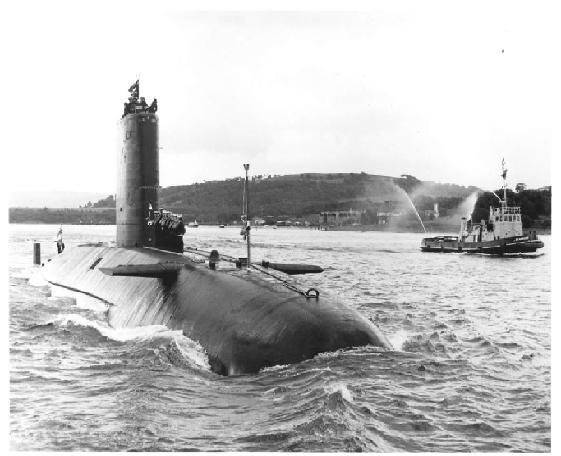
The first and only to date nuclear submarine, sank the enemy ship in combat conditions. After a victorious return from the South Atlantic, the Conkeror submarine took part in another sinister operation, code-named “Waitress,” the theft of a Soviet hydro-acoustic station in the Barents Sea.
In August, 1982, Arctic waters, was plowing through a peaceful Soviet anti-submarine patrol disguised as a trawler under the flag of Poland. Behind the stern of the vessel a long trawl dragged along with a secret device attached to the end. Suddenly, a steel "pike" with automatic clippers attached to its body appeared from the depths of the sea. “Chick!” - the tool ate a trawl and the boat with the prey disappeared without a trace in the ocean.
Since then, according to one of the British officers, the name of the boat "Conqueror" is pronounced in the headquarters "with great respect and always in a half-whisper."
ARA General Belgrano
Former American cruiser "Phoenix", type "Brooklyn".
Launched 13 March 1938, Mr .. Sold to Argentina in 1951,
Total displacement 12 000 tons, *
Crew about 1100 people, *
32 node speed,
Main armor belt 140 mm steel,
Armament: *
- 15 x 152 mm guns of the main caliber;
- 8 x 127 mm universal guns;
- 2 British anti-aircraft missile complex Sea Cat;
- 20 mm and 40 mm automatic guns for self-defense;
- light helicopter "Aluett" made in France.
* all data is valid on 1982 year
A cruiser who deceived fate in the harbor of Pearl Harbor, but who ingloriously perished after 40 years in the South Atlantic. Frankly speaking, by the beginning of the 1980's, the cruiser “General Belgrano” was a museum artifact. However, given the status of the "great maritime state" of Argentina and the realities of the Falklands war, it still retained sufficient combat capability. If the Belgrano managed to break through to the British squadron, he would have fired all the destroyers and frigates of Her Majesty with their large-caliber guns with impunity - the British sailors did not have any serious anti-ship weapons, except for three dozen SiHarrier submarines of normal free-fall bomber squadrons.
Destroyers "Piedra Buena" and "Hippolito Bouchard"
Former US destroyers of the "Allen M. Sumner" type.
Launched in 1944, sold to Argentina in 1974,
3500 total tonnes tonnage
34 node speed,
Armament: 6 x 127 mm universal guns, small-caliber anti-aircraft artillery, Exocset anti-ship missiles (from the end of 70-x).
In the years of the Second World 59 destroyers of the type "Allen M. Sumner" were modestly considered the best in the world. In general, the American destroyers of those years were significantly different from the British, German or Soviet ships of a similar class - suffice it to say that they were larger than the leader "Tashkent"! Hefty vessels with an ocean range (6000 miles on 15 Uz.), Six main caliber guns and a full set of radar and sonar equipment.
By the beginning of the 80s, they were already pretty outdated, and it was simply indecent for any developed country to have such trash in its fleet. However, given the realities of the Falklands conflict, in which the impoverished Great Britain with the same poor Argentina were “butting”, the old American destroyers still represented a formidable force. In the event of a possible duel with the destroyer Sheffield, the latter did not have a single chance - six 127 mm guns against a single 114 mm gun! It is a pity that the Argentinean command was so cowardly ...
Summing up
In the First World War, the British too self-confidently stated that submarines are “the weapon of the poor”. But, despite the contempt of the British admiralty, the little angry fish quickly proved that they could bite painfully. The legendary submarine U-9 sank three British cruisers in one battle: Hawk, Abukir and Kreyssi ...
During the Second World War, submarines became one of the most terrible misfortunes - the German “wolf packs” sank the order of 3000 transports and warships! Alas, despite the tremendous successes, it became clear to the Germans that no heroism and high technology could bring victory when the enemy had a whole anti-submarine system deployed. The battle for the Atlantic was lost, the blockade of the British Isles could not be carried out, and more than 700 steel coffins lay with thousands of seamen Krigsmarine trapped inside the 28.
The situation has changed dramatically with the advent of nuclear power plants - from that moment on, the boats became really “underwater” rather than “diving”, as it was before. Their secrecy has risen sharply - a reliable tool has not yet been found that can withstand nuclear submarines. With an experienced crew and a drop of luck, a modern atomic pike can go unnoticed through all security systems, even to the Mexican, even to the Kola Bay.
It sounds amazing, but powerful nuclear-powered icebreakers, capable of passing under the ice to the very North Pole and circling the globe in underwater position, in 60 years of their existence sank only one ship - the same Argentine cruiser! (Of course, without taking into account such cases as, for example, the sinking of the Japanese fishing schooner "Ehime Maru", accidentally turned over during the ascent of the USV Greenville submarine).
19 January 1991, the American nuclear submarine Louisville (SSN-724), opened fire on the positions of Iraqi troops, firing two dozen Tomahawk cruise missiles from the Red Sea. In subsequent years, multi-purpose nuclear submarines of the Los Angeles type were regularly involved in the bombardment of ground targets in the territory of Iraq, Yugoslavia and Afghanistan. For example, the Newport News submarine launched the Tomahawks 19 during the invasion of Iraq (2003), while the Providence, Scranton and Florida submarines beat Tomahawks on the positions of the Libyan army in 2011. “Florida” (modernized Ohio-type submarine) especially distinguished itself by launching an 93 “ax” in Libya in 24 hours!
All this, of course, can be considered the combat use of nuclear submarines. Nevertheless, the overall result is logical - nuclear submarines have never had a chance to enter a real naval battle - the one for which they were created. The subline-based ballistic missiles Triidet and Sineva remained rusting in the mines, the Granit complex super-missiles did not fly anywhere, they never left their 50 torpedoes from Sivulf-type nuclear submarines. The powerful nuclear-powered icebreakers remained, fortunately, a weapon of deterrence, only occasionally to the frightening group of surface ships to death, unexpectedly appearing and just as elusively disappearing in the depths of the ocean.
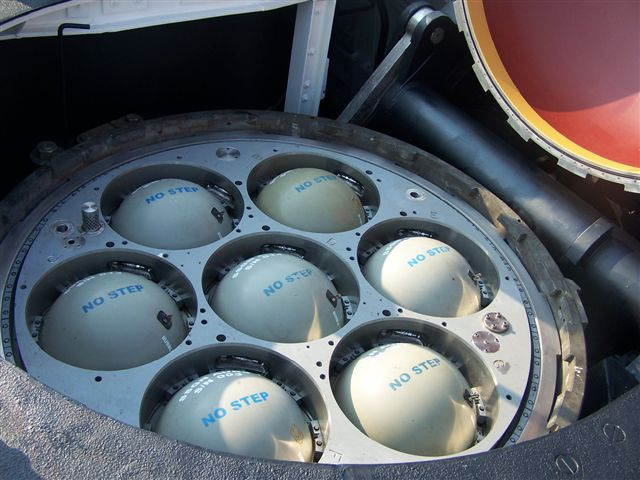
Tomahawks in the missile mines of the former Miami strategic missile carrier. Instead of each intercontinental ballistic missile fit on 7 cruise missiles - total 154 "Tomahawk" in 22 mines. The remaining two mines are occupied by equipment for underwater saboteurs
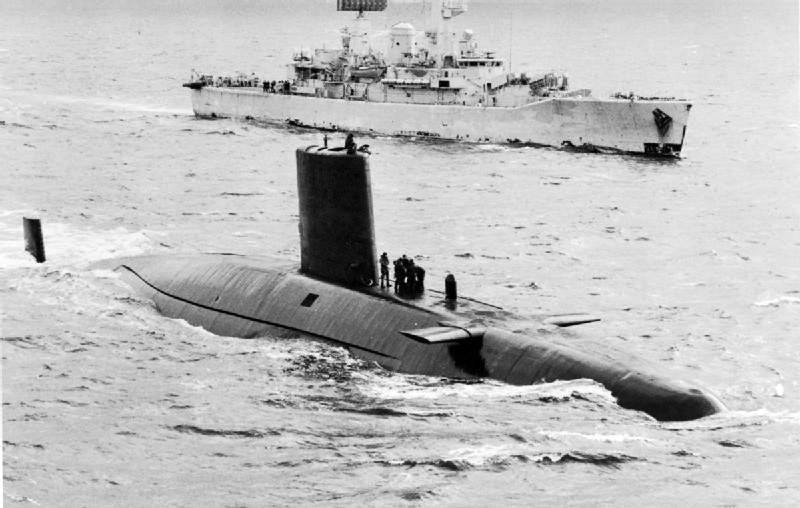
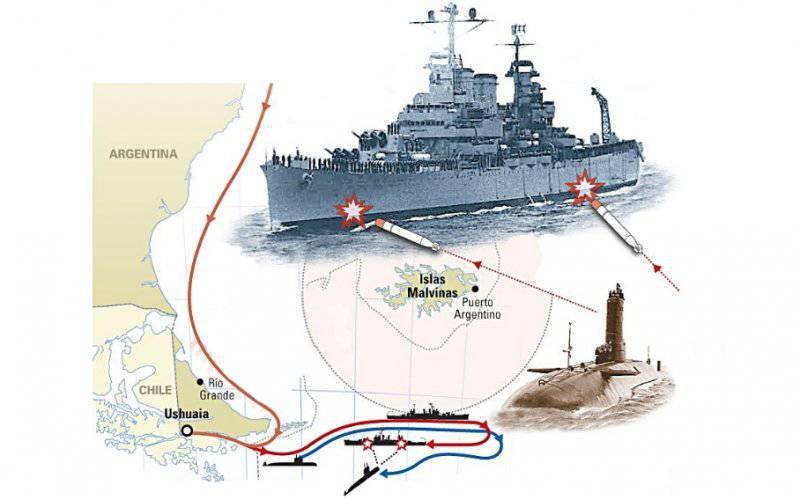
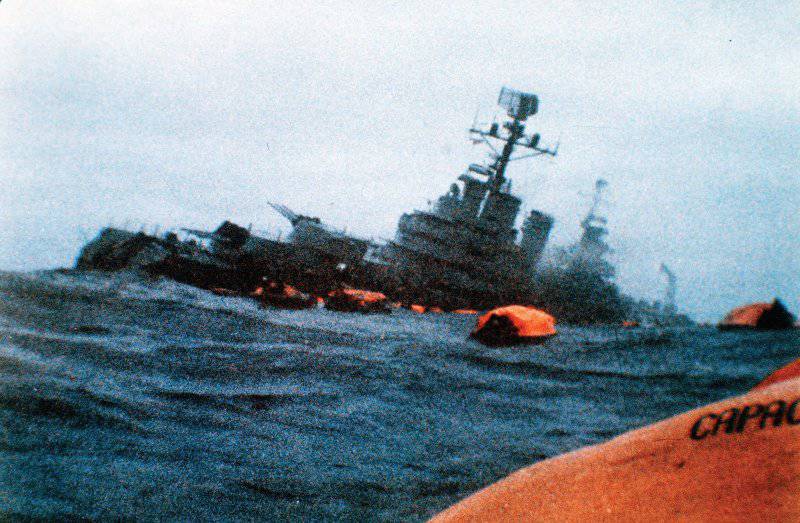
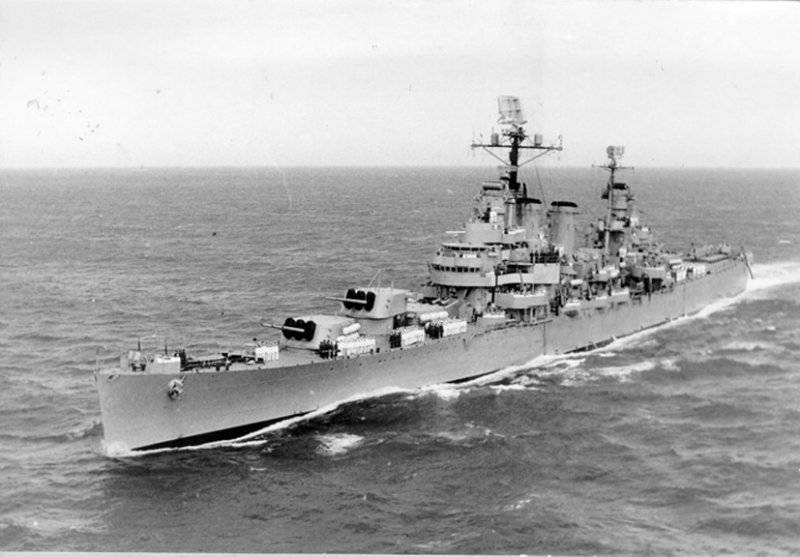
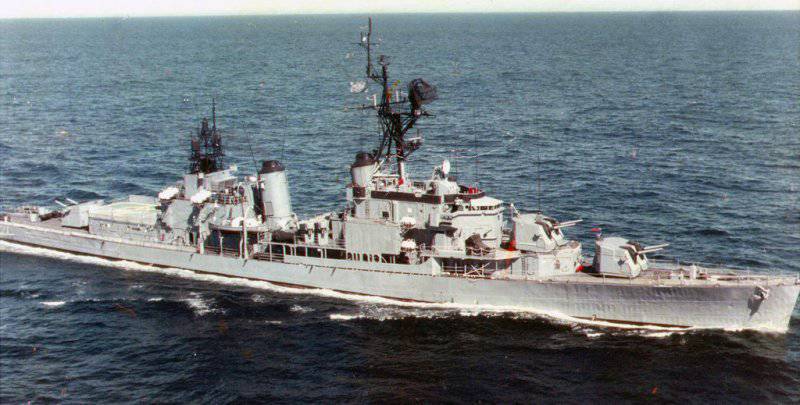
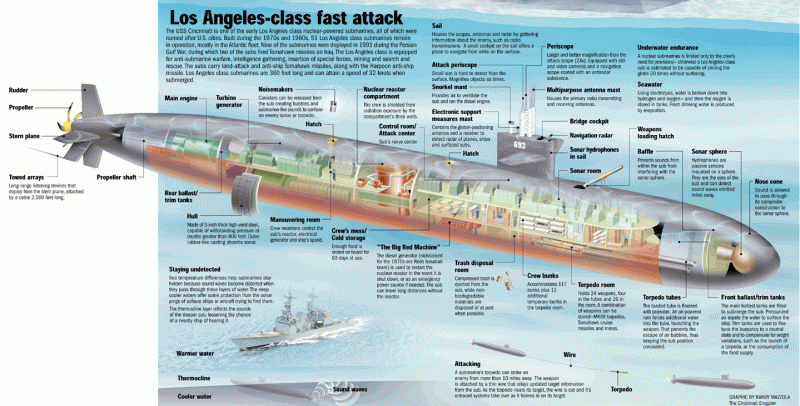
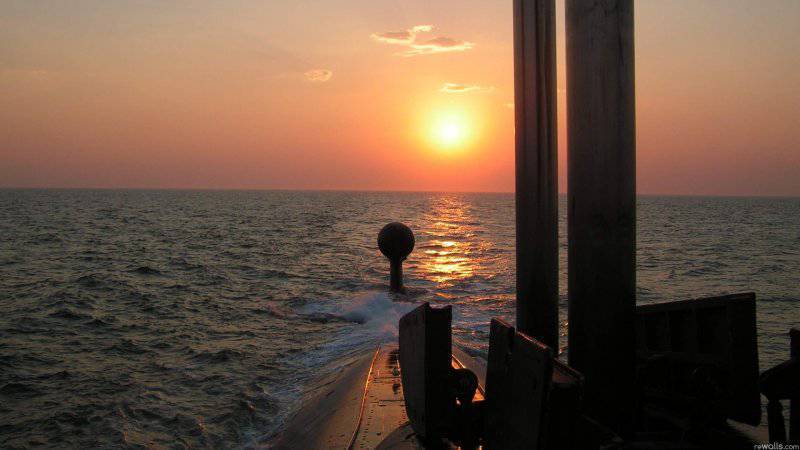
Information